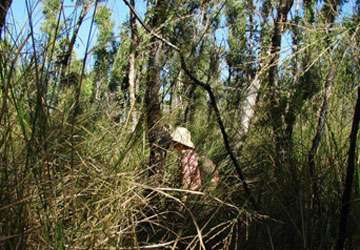Echidna and olinguito finds highlight importance of collections

Museum Mammal Curator Roberto Portela has hailed the discovery of a new mammal living in South America as a reminder of the importance of protecting museum collections.
Zoologist Kristofer Helgen, who works at the Smithsonian, recently discovered the olinguito, a mammal living in the cloud forests of Colombia and Ecuador.
It had previously been overlooked in the collection from the Field Museum, Chicago, and is the first new species of carnivore to be identified in the Western hemisphere in 35 years.
Long-beaked echidna hiding in a drawer
Collaborating with Helgen, Portela recently made a similar breakthrough in his work on the long-beaked echidna when the pair identified the history of a specimen relegated to a drawer in the Natural History Museum collection for decades.
The discovery, reported here in January, hinted that the hedgehog-like mammals could still be living in the rugged Kimberley region in Western Australia.
Scientists believed that the mammal became extinct in Australia between 10,000 to 20,000 years ago when the area became more arid.
Portela and Helgen's discovery of the long-beaked echidna proved that the mammals had been living in more recent times than previously thought.
The specimen had originally been collected and labelled rare by John Tunney in 1901, but, for unknown reasons, it did not catch the attention of previous researchers.

James Kohen, a colleague from the Biological Sciences Department at Macquarie University, Australia, then visited the Kimberley region and collected stories from aboriginal communities about local fauna. They reported having seen long-beaked echnidas within recent generations.
This has left the researchers in little doubt of what they have uncovered.
'The discovery of the echidna and now the olinguito reminds us of the potential hidden in museum collections and the need to look after them so future research can continue to enlighten us,' Portela said.
Provided by Natural History Museum